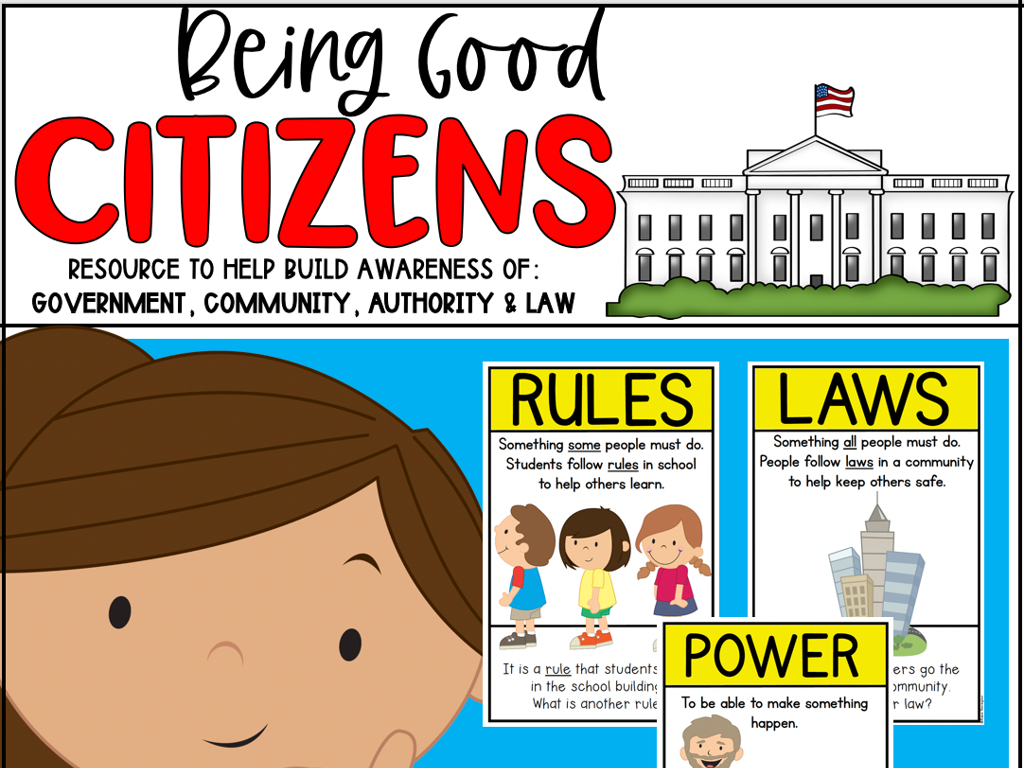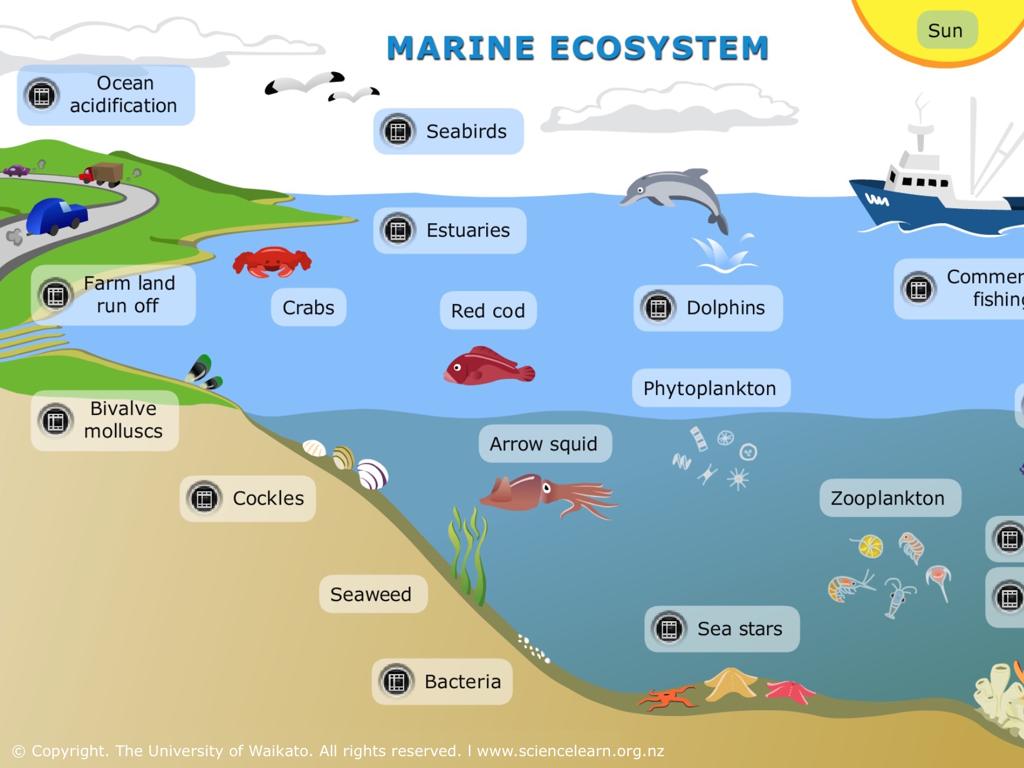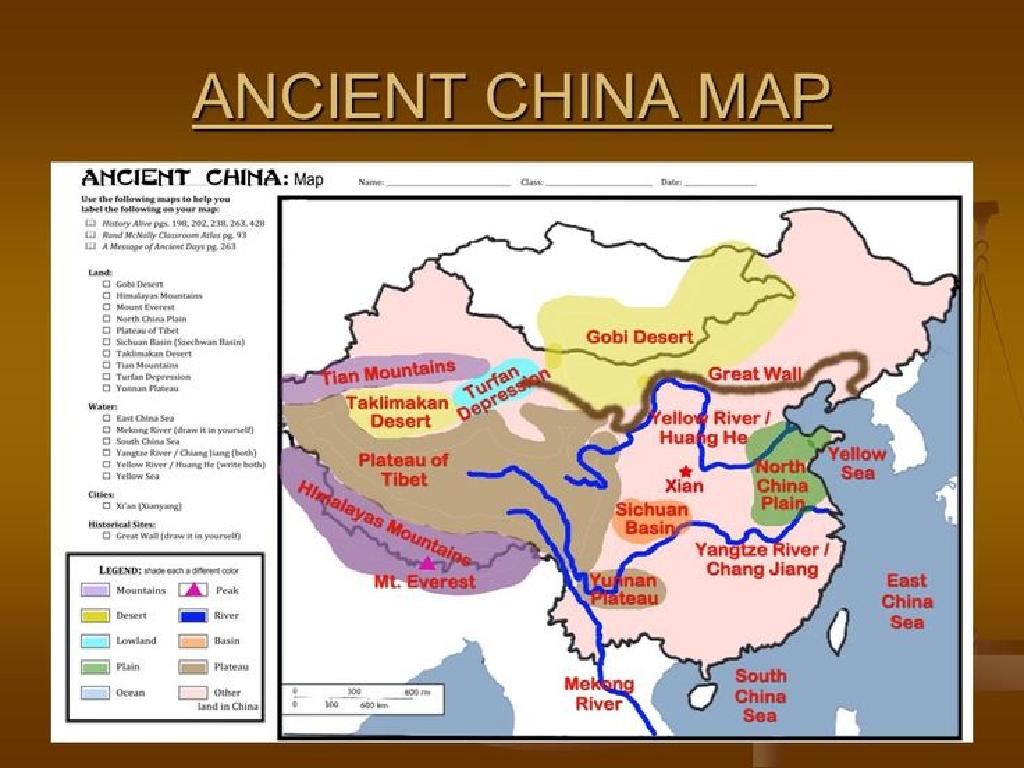Identify And Select Countries Of Asia: Region 6
Subject: Social studies
Grade: Seventh grade
Topic: Asia: Geography
Please LOG IN to download the presentation. Access is available to registered users only.
View More Content
Exploring Asia: Region 6
– Asia: Earth’s largest continent
– Asia covers 30% of Earth’s land area, with diverse climates and landscapes.
– Celebrating Asia’s diversity
– Home to various cultures, languages, and traditions.
– Focus on Region 6 countries
– Region 6 includes countries like Thailand, Vietnam, and Myanmar.
– Understanding regional characteristics
– Learn about the unique geography, culture, and history of Region 6.
|
Begin with an introduction to Asia, highlighting its size and the variety of geographical features found across the continent. Emphasize the cultural, linguistic, and traditional diversity that makes Asia unique. Today’s lesson will focus on the countries of Asia’s Region 6, which includes Southeast Asian nations. Provide students with a map to visualize the region and encourage them to note the distinct characteristics that define each country within Region 6, such as their geographical location, cultural practices, and historical backgrounds. This will set the stage for a more in-depth exploration of each country in subsequent lessons.
Exploring Asia: Understanding Region 6
– Asia’s division into regions
Asia is categorized for study into various regions based on geography, culture, and history.
– Countries within Region 6
Region 6 includes countries like Thailand, Vietnam, and Myanmar, among others.
– Significance of regional study
Studying regions helps us appreciate diversity and interconnectedness within Asia.
– Engage with Region 6’s geography
Explore maps, cultures, and landscapes to better grasp Region 6’s unique characteristics.
|
This slide introduces students to the concept of dividing Asia into regions for easier study and understanding. It focuses on Region 6, which comprises several countries with distinct cultural and geographical features. Emphasize the importance of recognizing the diversity within Asia and how regional studies can provide insights into the relationships between neighboring countries. Encourage students to explore maps and resources to familiarize themselves with the countries in Region 6, their landscapes, and cultural attributes. This foundational knowledge will be crucial for further studies on the economic, political, and social aspects of the region.
Exploring Asia: Region 6 Countries
– List of Region 6 countries
– Includes countries like Thailand, Vietnam, and Myanmar
– Capitals and flags
– Bangkok is the vibrant capital of Thailand, Hanoi for Vietnam, Naypyidaw for Myanmar
– Fun facts about each country
– Thailand is known for its beautiful beaches, Vietnam for its coffee production, Myanmar for its ancient temples
– Engage with cultural uniqueness
|
This slide aims to familiarize students with the countries of Asia’s Region 6. Start by presenting the list of countries, ensuring to highlight Thailand, Vietnam, and Myanmar as examples. Show the flags next to the name of each country and its capital city to help students visually associate the flag with the country. Share engaging fun facts, such as Thailand’s famous beaches, Vietnam being the world’s second-largest coffee exporter, and Myanmar’s historical temples like Bagan. Encourage students to explore the cultural aspects that make each country unique, fostering a sense of global awareness and curiosity about world geography.
Exploring Asia: Region 6 Geography
– Major landforms of Region 6
– Mountains, plateaus, and plains define the landscape.
– Significant rivers and lakes
– The Mekong River and Caspian Sea are vital water bodies.
– Climate zones diversity
– Ranges from arid deserts to tropical rainforests.
– Impact on human activity
– Geography influences agriculture, settlement, and culture.
|
This slide aims to give students an overview of the physical geography of Asia’s Region 6. Highlight the variety of major landforms such as the Himalayas and the Tibetan Plateau, and how these affect the climate and human activities. Discuss the importance of rivers like the Mekong for their roles in agriculture, transportation, and as a source of freshwater. Explain the different climate zones, from the arid Gobi Desert to the lush rainforests of Southeast Asia, and how these climates impact the lives of the people living there. Encourage students to think about how geography can shape culture and daily life, preparing them for a discussion on the relationship between the environment and human activities.
Cultural Highlights of Asia: Region 6
– Diversity of languages in Region 6
– Region 6 includes languages such as Mandarin, Thai, and more.
– Festivals and cultural practices
– Diwali, Lunar New Year, and Songkran are key celebrations.
– Unique traditions across countries
– Tea ceremonies in Japan, dragon dances in China.
– Exploring cultural significance
– Understanding traditions helps appreciate regional identity.
|
This slide aims to give students a glimpse into the rich cultural tapestry of Asia’s Region 6. Emphasize the linguistic diversity, with many countries having their own unique languages and dialects. Highlight major cultural practices and festivals, such as Diwali in India, Lunar New Year in China, and Songkran in Thailand, which are integral to the social fabric of these countries. Discuss unique traditions like the Japanese tea ceremony or the dragon dance in China, which are steeped in history and have deep cultural significance. Encourage students to explore how these cultural elements contribute to the identity of each country and the region as a whole. This will foster a greater understanding and appreciation for the diversity within Asia’s Region 6.
Economic Overview of Asia: Region 6
– Region 6’s main industries
– Diverse economies with key sectors
– Agriculture, manufacturing, services
– Farming, factories, and service providers
– Trade within Region 6
– Exports and imports between countries
– Economic challenges faced
– Issues like poverty, infrastructure, and trade barriers
|
This slide provides an economic snapshot of Asia’s Region 6, highlighting the main industries such as agriculture, where rice and tea might be dominant; manufacturing, which could include textiles and electronics; and services, which encompass banking, tourism, and more. Discuss trade activities, emphasizing the importance of both exports and imports to the region’s economies. Address economic challenges that the region faces, such as poverty, underdeveloped infrastructure, and trade barriers that can hinder growth. Encourage students to think about how these economic factors influence daily life in these countries and the global economy. Provide examples of goods that are traded and discuss how economic challenges might be addressed.
Mapping Asia: Region 6 Exploration
– Label Region 6 countries on a map
– Mark the capital cities
– Add major rivers and mountains
– Indus, Ganges rivers; Himalayas
– Highlight other key physical features
– Include features like the Gobi Desert, Plateaus
|
This class activity is designed to help students familiarize themselves with the geography of Asia’s Region 6. Provide each student with a blank map of the region. Instruct them to label each country and its capital city. They should also mark significant rivers like the Indus and Ganges, as well as mountain ranges such as the Himalayas. Encourage them to add other physical features like deserts and plateaus. This exercise will aid in their spatial understanding of the region and how physical geography can impact culture and civilization. Possible variations of the activity could include group work to label larger maps, research and presentation of interesting facts about one of the physical features, or a creative storytelling assignment where students explain how the geography has shaped the history of a specific country in Region 6.
Class Activity: Cultural Exploration of Asia’s Region 6
– Research a Region 6 country in groups
– Explore culture, language, traditions
– Look into local customs, festivals, and official language(s)
– Create a presentation or poster
– Use visuals and facts to make your presentation/poster engaging
– Share findings with the class
– Practice public speaking and presentation skills
|
This activity is designed to foster teamwork and enhance research skills as students delve into the rich cultural tapestry of Asia’s Region 6. Each group should select a different country to ensure a variety of presentations. Encourage students to explore various aspects of culture, including traditional clothing, cuisine, holidays, and languages. They should also consider how geography influences cultural practices. Provide resources such as access to the library or approved online databases. For the presentation, students can use digital slides, posters, or even enactments to convey their findings. Possible countries for research include Thailand, Vietnam, Laos, Cambodia, and Myanmar. The goal is to have students appreciate the diversity within a single geographical region and develop their ability to communicate their findings effectively.
Conclusion: Asia’s Region 6 Overview
– Recap of Region 6 countries
– Review the list of countries we’ve studied in Asia’s Region 6.
– Insights on geography & culture
– Discuss the diverse landscapes and cultural practices we’ve explored.
– Significance of regional knowledge
– Understanding regions promotes global awareness and cultural sensitivity.
– Reflect on learning experience
– Think about how this knowledge might be useful in the future.
|
As we conclude our journey through Asia’s Region 6, it’s important to reflect on the diverse countries we’ve covered, their unique geographical features, and rich cultural heritage. This reflection helps students appreciate the complexity and interconnectedness of the world. Encourage them to think about how geographical knowledge can enhance their understanding of global issues and cultural diversity. Ask students to consider how this information might be relevant to current events or future studies. This is also an opportunity to reinforce map-reading skills and to discuss how geography influences cultural development.





